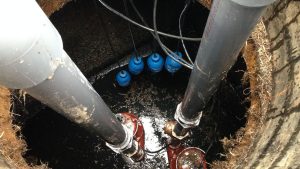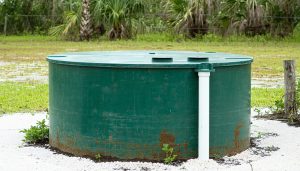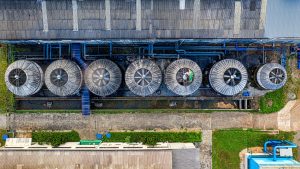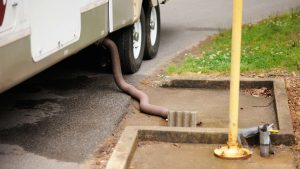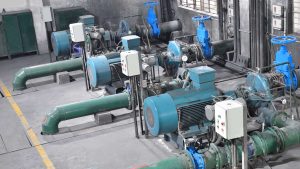Scheduled lift station assessments keep your wastewater system dependable. Check electrical controls, vibration, leaks, and structural wear before small issues become costly outages. By tracking performance and tightening telemetry, you can fine-tune maintenance and extend pump life.
Stay on top of site conditions and capacity limits so your team isn’t caught off guard. The findings will shape upgrades and smarter schedules—and there’s work to do that makes a real difference.
Understanding Lift Station Assessments
Lift station assessments are systematic checks of electrical, mechanical, building, structural, and operational aspects to ensure reliable wastewater pumping. You’ll understand how each element affects reliability, from electrical controls to structural integrity.
Lift station assessment importance lies in preventing interruptions and extending equipment life. You’ll set inspection frequency to catch wear early and schedule proactive maintenance.
Common issues include pump vibration, valve leaks, and access gaps, all trackable through clear performance metrics such as flow, head, and cycle counts. By recognizing patterns, you’ll prioritize repairs, allocate resources wisely, and maintain efficient operations across the wastewater collection system.
Key Electrical and Controls Checks
From understanding lift station assessments, you see how electrical and control systems keep pumping reliably. In this phase, you’ll verify pump control operations, ensuring no delayed starts or stalling.
Inspect the control panel for worn contacts and clean terminations, and confirm conduit seal-offs are intact. Review telemetry systems for accurate alarms and data logging, reducing unnecessary site trips.
Conduct electrical inspections focusing on grounding, short circuits, and cable strain near the wet well. Adhere to maintenance protocols, documenting findings and scheduling timely corrective actions to maintain consistent performance and minimize unplanned outages.
Mechanical Health and Vibration Monitoring
Listen for any abnormal noise or vibration from pumps during operation, as these signals often reveal wear or misalignment before they cause failures.
In this section, you’ll apply vibration analysis techniques to identify imbalances, misalignments, or bearing wear early. Track pump performance metrics such as flow, head, and motor current to spot declines or deviations.
Implement noise reduction strategies like proper isolation and enclosure where appropriate, and verify mounting integrity.
Follow maintenance best practices with regular data logging, trend analysis, and timely inspections to flag mechanical failure indicators before costly downtime.
Building and Structural Integrity
A sound building envelope supports reliable operations, so we’ll start by applying the mechanical health insights to the housing structure.
Assess building materials for durability, then conduct targeted structural inspections to catch hidden problems before they escalate.
Prioritize corrosion prevention in metal elements and seal joints to deter water intrusion.
You implement regular integrity assessments of walls, doors, and roofs, ensuring seals and weatherproofing remain robust.
Address deficiencies promptly to extend longevity planning, aligning maintenance with lifecycle expectations.
Document findings, schedule proactive repairs, and verify access to control and telemetry equipment remains unobstructed for safe, dependable lift station service.
Operational Capacity and Site Conditions
Operational Capacity and Site Conditions focus on ensuring the lift station can handle projected flows and stay secure during all events.
Track wet well monitoring to prevent overflows and confirm pump capacity aligns with peak demands, even when a unit is out of service.
Analyze drainage management to keep surface water away from critical structures and reduce flood risk.
Assess rainfall impacts by reviewing precipitation patterns and storm performance, and adjust operations accordingly.
Maintain site security with reliable padlocks, fences, and door switches, and ensure clear access for maintenance crews without compromising protection.
Regular checks preserve reliability and safety.
Maintenance Scheduling and Telemetry
Maintenance scheduling ties directly to telemetry by coordinating monitoring needs with pump cycles and service windows. Align inspection intervals, fuel and parts purchasing, and routine testing with remote monitoring alerts to minimize site trips.
Telemetry installation should emphasize reliable data transmission, secure connections, and clear dashboards for quick decisions. Data analysis transforms readings into actionable insights, highlighting trends in wear or efficiency gaps.
Use maintenance optimization to plan predictable maintenance for valves, sensors, and pumps, reducing emergency calls. Schedule system upgrades during low-demand periods to ensure they won’t disrupt service.
Keep documentation concise to support future telemetered improvements and audits.
Responding to Findings and Planning Upgrades
When findings are identified, you should immediately classify them by urgency and impact, then map clear corrective actions with owners, due dates, and required resources.
Translate results into practical upgrade plans that balance risk, cost, and reliability.
- Prioritize upgrade strategies that address the highest risk areas first
- Align budget considerations with projected water quality and compliance needs
- Track technology advancements to maximize monitoring efficiency
- Engage stakeholders early to secure buy-in and resources
- Verify proposed changes meet compliance regulations and schedule transparent progress updates
Your Partner in Reliability: South Florida’s Lift Station Experts
When reliability matters, partner with a team built for it. South Florida Lift Stations brings decades of hands-on expertise, factory-trained technicians, and premier pumping solutions tailored to the unique demands of our region. As a family-owned, family-operated company, we treat your system like our own—delivering responsive service, meticulous assessments, and honest guidance that protects your assets and your budget.
From telemetry-driven monitoring to comprehensive electrical and mechanical evaluations, our scheduled assessments detect issues early and keep your sites operating at peak efficiency. With a deep inventory, streamlined repairs, and proactive upgrade planning, we minimize downtime and extend equipment life—rain or shine.
Choose South Florida Lift Stations for trusted service, transparent communication, and measurable results. Let’s keep your collection system dependable, compliant, and ready for what’s next. Reach out today and put our premier pumping solutions to work for you.


